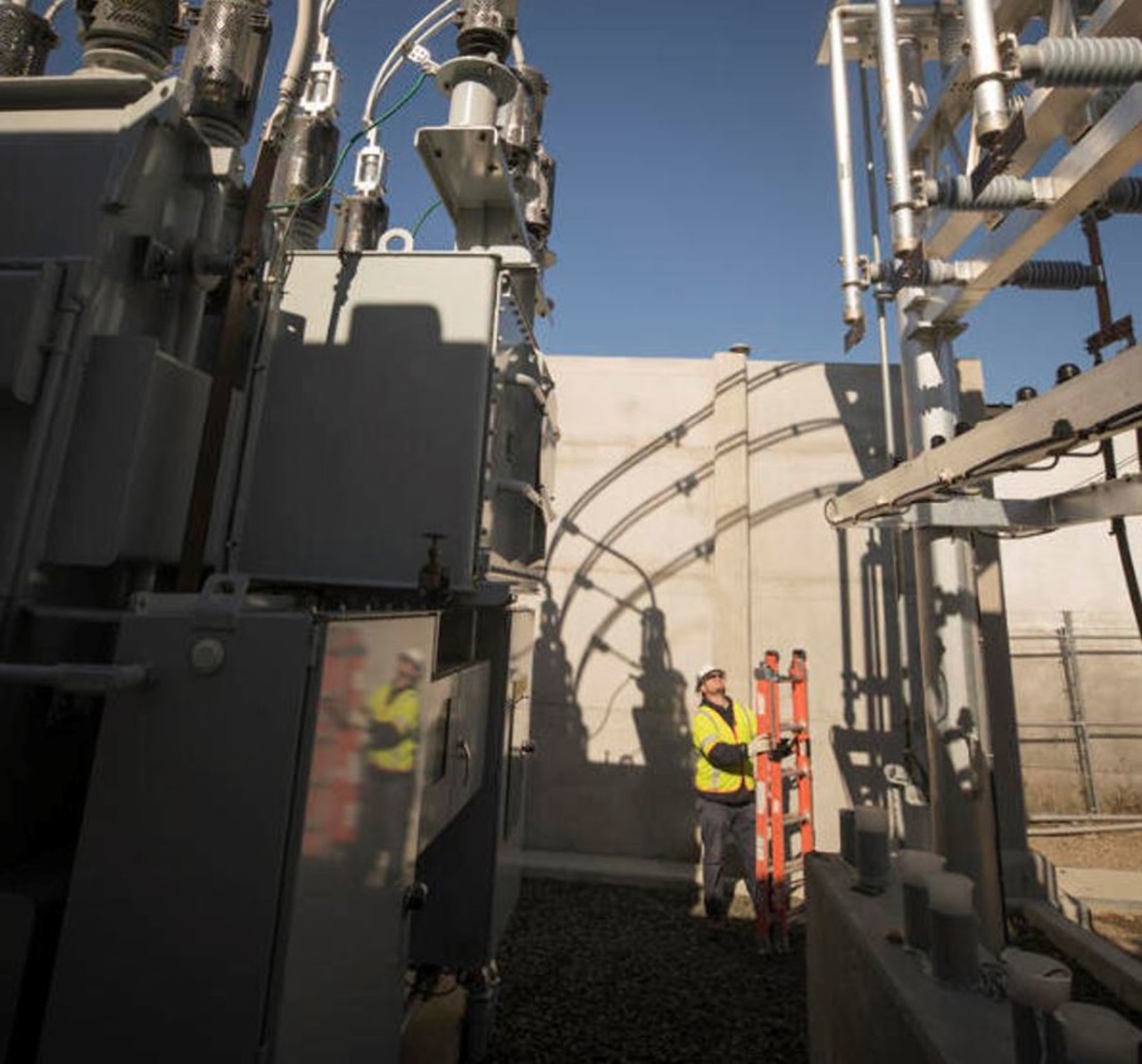

Sulfur hexafluoride, or SF6, is a potent greenhouse gas that has a global warming potential of 22,200 times that of CO2 over a 100-year period. It is currently used for insulation and to interrupt current in high voltage substation equipment. We have already drastically reduced SF6 leaks from our system, and we are working with partners from across the sector to identify, develop, and implement SF6-free solutions at the earliest opportunity.
Targets
We are drastically reducing SF6 emissions from our global operations 50% by 2030 from a 2019 baseline.
We will completely eliminate SF6 from our assets by 2050.
Achievements to date
We have reduced our SF6 emissions by more than 80% since the year 2000.
We piloted a non-SF6 69 kilovolt (kV) vacuum circuit breaker in 2012 and have since installed an additional twelve 69 kV vacuum circuit breakers. In vacuum circuit breakers, circuits are broken in a vacuum which helps to interrupt the current and prevent arcing which could damage the equipment.
We have partnered with The Electric Power Research Institute (EPRI), a US-based non-profit research and development organization, for the monitoring and evaluation of SF6 alternatives.
National Grid is hiring additional SF6 engineers to supervise our current SF6 inventory, aggressively reduce existing equipment leaks, and to work with manufacturers on SF6 alternatives. We recently solicited circuit breaker manufacturers for available SF6 alternatives, and, as a result, we have ordered a newly introduced 115 kV vacuum circuit breaker for delivery in 2023. By letting manufacturers know utilities are in the market for more environmentally friendly solutions, we hope to not only reduce our direct emissions, but to also advance the U.S. market to offer more sustainable options for all buyers.